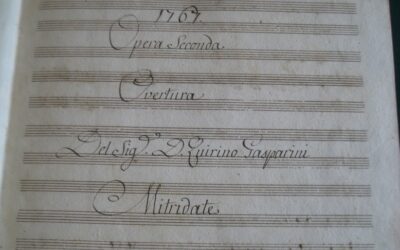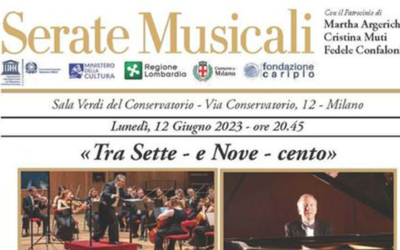The Unveiling of Symphony K.16
A Mozart Myth Dismantled
The Symphony No. 1 in E-flat major, K.16, attributed to young Wolfgang Mozart, reveals the complex truth behind his early compositions. Far from the prodigious work of an eight-year-old, it is instead a product of substantial parental intervention and musical simplification.
Mozart: The Fall of the Gods
This book offers a fresh and critical look at the life of Wolfgang Amadeus Mozart, challenging the myths that have surrounded him for centuries. We strip away the romanticised image of the “natural genius” and delve into the contradictions within Mozart’s extensive biographies. Backed by nearly 2,000 meticulously sourced citations, this work invites readers to explore a deeper, more complex understanding of Mozart. Perfect for those who wish to question the traditional narrative, this biography is a must-read for serious music lovers and historians.
“The original, more sophisticated musical passages were simplified by Leopold, possibly to align with the expectations of an infant prodigy.”
Mozart: The Fall of the Gods
Mozart’s Symphony No. 1 in E-flat major, K.16, long celebrated as a testament to his prodigious talent at just eight years old, reveals a much less straightforward reality. This symphony, attributed to the young Wolfgang Amadeus Mozart, is often paraded as evidence of his exceptional abilities. However, a closer examination suggests a more complex and less flattering picture.
The K.16 manuscript, bearing the title written by Mozart’s father Leopold, was intended to showcase Wolfgang’s early compositional prowess. Yet, historical accounts, including those from Mozart’s sister Nannerl, hint at significant doubts about the authenticity of this narrative. Nannerl’s memoirs recount a period in London when Wolfgang was supposedly barred from the piano due to Leopold’s illness, leading to the composition of this symphony. However, the evidence points to Leopold’s extensive involvement in both the composition and the final version of the piece.
The manuscript reveals several inconsistencies and peculiarities. For instance, while Nannerl claimed the symphony was intended to feature prominent parts for trumpets and timpani, these elements are notably absent in the K.16. Furthermore, the music’s complexity seems incongruous with the supposed abilities of an eight-year-old. The original, more sophisticated musical passages were simplified by Leopold, possibly to align with the expectations of an infant prodigy.
Leopold’s influence is evident in the extensive corrections and alterations found in the manuscript. Rather than a product of youthful genius, K.16 appears to be a heavily edited work, with Leopold’s modifications aimed at making the music more suitable for a young child’s capabilities. This includes removing intricate imitations and simplifying harmonies to ensure they fit the narrative of Wolfgang’s prodigiousness.
Moreover, Mozart’s ability to compose intricate music without a keyboard—suggested by Nannerl’s accounts—seems questionable. Adult Mozart himself struggled with composition when not in proximity to a keyboard, raising further doubts about the symphony’s origins.
The true nature of K.16 reflects a collaborative effort, with Leopold playing a significant role in shaping the symphony to fit his son’s alleged talent. The work is less a demonstration of an eight-year-old’s genius and more a product of parental intervention and musical simplification.
You May Also Like
The Return of Gatti’s Aria
In the magnificent Max Joseph Hall of the Residenz München, tenor Daniel Behle performed the aria “Puoi vantar le tue ritorte” by Luigi Gatti, taken from his opera Nitteti. This concertante piece, for which we composed the cadenzas, was brought to life by the Salzburger Hofmusik orchestra under the direction of Wolfgang Brunner.
Quirino Gasparini’s Music Performed for the First Time
For the first time in modern history, Quirino Gasparini’s music has been performed. This concert, featuring arias from Mitridate and Beethoven’s Seventh Symphony, was conducted by Maestro Leonardo Muzii, with soprano Anastasiia Petrova.
Teaching Mozart at Bocconi University
We delivered a four-hour lecture on Mozart at Bocconi University, showcasing unpublished music by Gasparini, Gatti, and Tozzi while comparing textual and musical treatment with Mozart’s works. Unseen variants from Le Nozze di Figaro were also revealed.
New Revelations About Mozart at the Évora Forensic Conference
At the Évora Forensic Conference, new research confirmed that both Mozart’s personal catalogue and the signatures on his violin concertos are forgeries, challenging long-held beliefs.
Modern Premieres at Bayreuth
The modern premieres of Antonio Tozzi, Luigi Gatti, and Tommaso Traetta’s works at Bayreuth brought long-overlooked Italian composers back into the spotlight. These performances, transcribed and revised by Luca Bianchini and Anna Trombetta, have restored the place of these remarkable composers in music history.
Luchesi’s Concerto Revived at Milan’s Sala Verdi
A standing ovation followed the performance of our revised edition of Luchesi’s Concerto in F for piano and strings at the Sala Verdi in Milan, conducted by Maestro Giorgio Rodolfo Marini and performed by the Insubria Chamber Orchestra.







